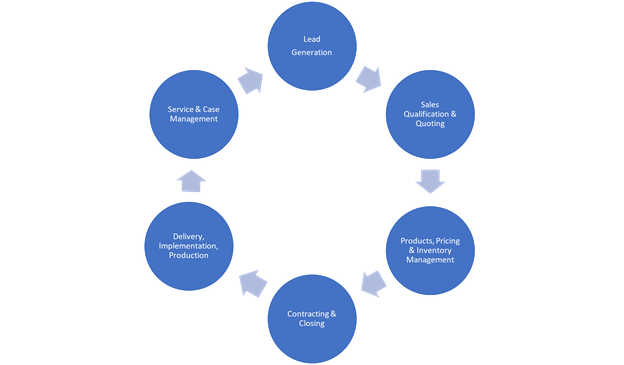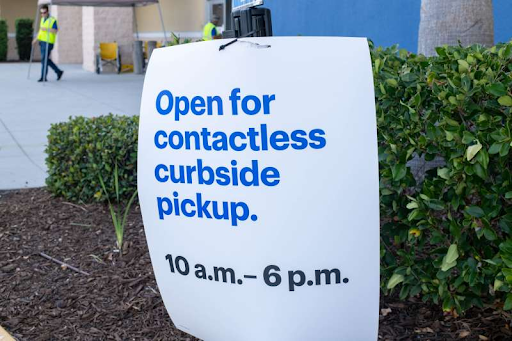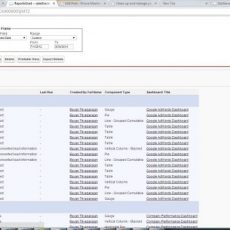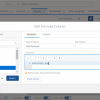As a Salesforce admin or CRM lead, you are usually asked to solve a problem based on a specific business need. Being passionate about Salesforce, we jump into solutions, spin up quick demos and work with contracted partners. Then, after spending a lot of time and money, we find that the adoption is low and leadership has completely lost faith in the tool.
Where did we go wrong and why does this keep happening? What can we do better next time?
Let’s look at a simple plan for how you can do the homework required even before you start the project process — and save a lot of time and money for your company as well.
Does your project align with your corporate objectives?
Starting with a budget says, “We’re going to do everything we want this year with this amount of money.” There are various reasons this is a suboptimal approach.
Instead, start with a roadmap of what is needed. Prioritize that. Then determine a timeline. Only then can you determine how you’ll allocate funds considering any associated corporate priorities.
For example, if growth is your primary objective for the year, focus your initial project on Marketing and Lead Generation Management.
- How will you identify, qualify and capture net new data for your targets?
- Do you have closed business demographics that can focus your efforts?
- How quickly will you respond to interest and how will prospects be assigned?
This project will touch on the website, lead forms, self-service communities or portals, campaigns, and partnerships. That’s enough for one project and helps you build the Roadmap that will take you into the next half of the year. Below are the basic functional areas of a typical business. Any area is a viable focus for a project. By choosing a single functional area, you reserve project and stakeholder resources until they will be of most use. Based on your corporate goals, you can choose a different functional area per quarter to focus your efforts.

Is your organization ready for Change?
Consider how this or any project will affect the Users involved. While sometimes it is necessary to slow advancement for a brief period to make a long-term improvement, you never want to go backward or affect your customer satisfaction. So ask yourself a few questions:
- Is this a good time for our company to restructure this functional area, or has something changed in the industry/economy/season/business that might make it better to do this part of the roadmap at a different time?
2. Are the right project resources available to commit for the duration of this project (with extra time built in for delays)?
Example: The 2020 Pandemic lockdowns offered an extraordinary time for many companies to assess and change their standard procedures. However, it was a bad time to do any projects requiring cultural change or training due to furloughs and layoffs. In the end, companies that could afford to take some chances utilizing smaller staff to offer unusual solutions thrived. Anything that wasn’t a step backward was worth a try.

Is the Cost worth the benefit of the project?
To accurately assess the value of automation, you must theoretically push the boundaries and know where the tipping points are. Knowing your cost per resource hour can have a tremendous effect on accurately assessing needs for change.
For example, let us say you have a single-threaded process for creating new Accounts based on credit approvals and other qualifications across three different systems before you can begin the Sales process.
Here are the facts: Task Time: 3 hrs/day, Resource cost: $24/hr, Single Thread Process?: Yes, Revenue Generating Process?: No.
Automation Cost: $5000. Annual Cost of current Process: $17,280 ( 48 weeks of 3 hours a day, ).
Resolution: The automation will pay for itself in 4 months.
Is the solution built to scale as we grow?
While not everyone is privy to it, sometimes an acquisition is in the works. By working closely (and honestly) with the executive team, you can determine if a sales process change might be better executed before or after the acquisition, depending on the change. The safest bet is to always build for scale. You should be able to discuss the following questions with the leadership team.
- What regulatory data or financial processes could we include in this project in case we someday wanted to go public?
- Could we easily pull valuation analytics if needed?
- By implementing this project, will it allow us to sell our company or increase its value? ( This can be a sensitive question but worth a private conversation with leadership.)
- How could we build this system so we can easily add new products/services as needed?
- Does our Role Hierarchy allow for easy territory division/expansion? (This is specific to sales territories)
Is there Business Alignment between functional areas for your project? It is imperative for cross-functional communication to be included from the earliest moments of project planning.
Example 1: Marketing team that spent weeks putting together a campaign for heavy discounts to increase deals in the slow season. The week prior to the campaign rollout, they presented it to the Sales team. The Sales team was furious, explaining that the heavy discounts during the slow season would result in even lower commissions for them! The entire campaign was scrapped and they had to scramble for ideas to increase revenue during the slow season.
Example 2: The Salesforce Team had finally found some time to clean up technical debt and revert the system to enhanced native functionality on a lot of workarounds they’d built over the years. Two weeks before that massive year-long project was due to start, the executive team agreed to implement E-Commerce capabilities, utilizing a 3rd party vendor to integrate systems. The result was that integration and growth functionality was implemented on an outdated structure, increasing the already cumbersome technical debt.
By starting your project from the foundation of these 5 guidelines, you can build a stronger case for your project and be sure you have high-level buy-in.
- Does your solution align with the Organizational roadmap?
- Is your organization ready for this change?
- Does your solution justify the cost?
- Is your solution scalable?
- Does your solution have alignment with different business units impacted by the rollout?
Once you’ve addressed all five of these concerns effectively, your users and your leadership team will be begging you for this project. And that means you won’t have to spend time selling it internally.
If you run into any roadblocks when gathering consensus in these 5 areas, the need has probably not yet reached the tipping point to make that project the obvious choice to everyone. Don’t worry. Just put it on a shelf until someone asks a question or logs a support case that might tip the scales in favor of pursuing the project.
It should go without saying, but your project will go much more smoothly and you’ll have much better success if everyone supports it.
As always feel free to post your comments and email me at buyan@eigenx.com for any questions.
Please subscribe
Subscribe to our mailing list and get tips to maximize salesforce to your email inbox.
I am honored to have your subscription. Stay tuned for tips to maximize your salesforce investment
Something went wrong.






